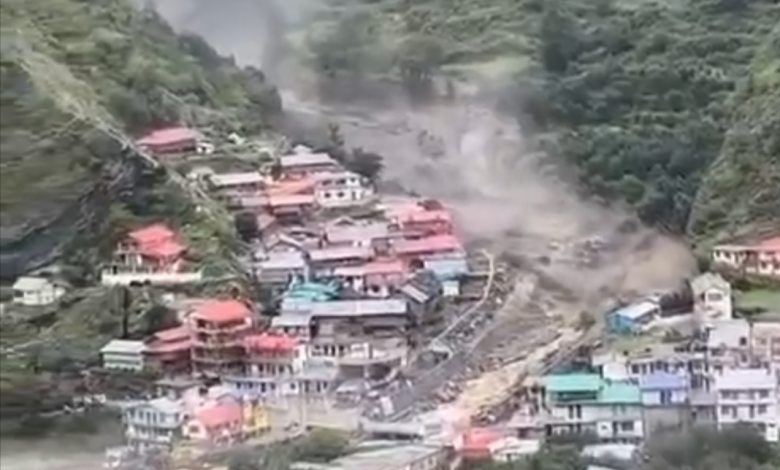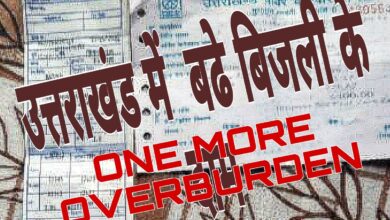When will our leaders learn lessons from the repeated ecological disasters in Uttarakhand

We all are extremely shocked to witness the most heartfelt heart wrenching third tragedy since the 2013 Kedarnath ecological disaster which claimed thousands of lives , the second being the Chamoli disaster that claimed two hundred lives and the present one, the third.
What is important here to note is the fact that in all these three massive heart wrenching havocs, the cloud burst has been the main reason.
There have been earthquakes in Uttarakhand in the past and the ecological disasters too arrived, even massive ones, but the frequency of these disasters have increased manifold after our visionless politicians obviously those who ruled and have been ruling now after Uttarakhand achieved a separate state status, became non serious towards Uttarakhand’s changing ecology and disturbing environment.
The vulnerability of Uttarakhand has enhanced exponentially during the last two decades especially after the anti environment friendly so called development taking place in this hilly region tremendously in the name of all weather roads, railway projects digging our mountains for tunnels at various spots over the distance of 80 kilometres with alleged dynamite explosions, throwing millions of tons of silt, muck, boulders inside the smoothly flowing rivers and rivulets and cutting thousands of trees including summer uncontrolled forest fires destroying our flora and fauna completely.
The entry of private builders and building contractors on vast scale in Uttarakhand is also one of the main reasons with even big hotels like Hyatt being built in the heart of dense jungle at Jeharikhal, near Lansdowne after allegedly cutting hundreds of trees and other countless other hotels to mint exorbitant profits but at the expense of our already fragile environment.
Despite so much destruction of Uttarakhand hills and loss of peoples’ precious lives during every monsoon due to massive landslides and flash floods our successive governments have not learnt any lessons.
The Joshimath subsidence is in front of us and one thousand houses and buildings developing deep cracks posing direct threat to lives is a recent example of destroying Uttarakhand towns through subsidence.
There is a clear cut policy of the government to prohibit people building houses up to 500 metres from the river but thousands of residential buildings , hotels , commercial buildings including government offices and resorts have been constructed on river sides throwing to winds all the legal norms finally becoming the easy prey of the ecological catastrophe as happened today in Dharali, Uttarkashi, Uttarakhand taking several lives and more than fifty people missing who definitely must have died by now as the flash floods with heavy boulders and silt was tremendous and extremely forceful leaving no chance of anyone’s survival whoever have come under its impact.
Unfortunately in Uttarakhand builder mafias, land mafias , hotel mafias and liquor mafias have allegedly fully influenced the system and majority of the valleys have been converted into the land of resorts, hotels and picnicking to mint exorbitant profit with increasing footfalls and millions of vehicles, trucks and bikes creating excessive pollution leading to massively spoiling of the already fragile mountains and environment of Uttarakhand.
After the 2013 , 16 th June massive ecological disaster of Kedarnath that killed more than twenty thousand pilgrims including the locals the government should have learnt lessons and should have exercised tremendous precision and precaution to ensure that no commercial construction would take place in the Uttarakhand hills especially in the valleys near the rivers and rivulets.
Not only this but the government should have concentrated its efforts to ensure that maximum plantation takes place and minimum deforestation, but unfortunately just the reverse happened.
After Kedarnath tragedy the entire Kedarnath precincts have been concretised and more and more buildings are coming up including a so called development of the Badrinath Dham vicinity and its surroundings with new buildings coming up, though the fact of the matter is that the seismologist and earth scientists , archeologists and geographical experts from Lucknow have very specifically and unambiguously issued warning not to erect buildings in the Kedarnath surroundings fearing future catastrophe of the scale of the one happened in June 2013.
They had suggested some other safe place for erecting Dharamshalas, and other buildings for the pilgrims and the temple priest so that in future the lives of the pilgrims, tourists and the general public could be saved in the event of such natural disasters reappearing but all in vain.
Our senior journalist friend Suresh Nautiyal has very rightly penned a piece on this tragedy:
*Dharali Ecological Tragedy in Uttarakhand: A Call for Action*
Today’s tragedy in Dharali, Uttarkashi, Uttarakhand, is a stark reminder of the vulnerabilities faced by communities in the Himalayan region. While details are still emerging, it’s clear that this incident has had a devastating impact on the local population.
The incident highlights the need for better infrastructure, emergency preparedness, and disaster management strategies in the region. Uttarakhand’s rugged terrain and harsh climate make it prone to natural disasters, and it’s crucial that authorities take proactive measures to mitigate these risks.
The people of Dharali and surrounding areas deserve support and relief in the aftermath of this tragedy. It’s essential that the government and local authorities work together to provide aid, shelter, and medical assistance to those affected.
Moving forward, it’s vital to conduct a thorough investigation into the causes of this tragedy and to implement measures to prevent similar incidents in the future. The safety and well-being of the people in this region must be a top priority.
Meanwhile, the National Green Tribunal has expressed its serious concern over the illegal construction of resorts, hotels and even residences in karge number from Uttarakashi to Gangotri on both sides of the roads on 80 kilometres stretch . With tourism going in the region experts say that Unregulated development is threatening the fragile ecosystem of the high altitude pilgrimage town with Dharali tragedy being seen as the result of these illegal constructions on massive scale and unregulated so called anti environmental development etc. The NGT has summoned the Union ministry of environment forests, and Climate change , Dehradun, Department of Urban development and the District Magistrate of Uttarkashi, Garhwal Uttarakhand to be present in the NGT court with replies on 27 November 2025.






